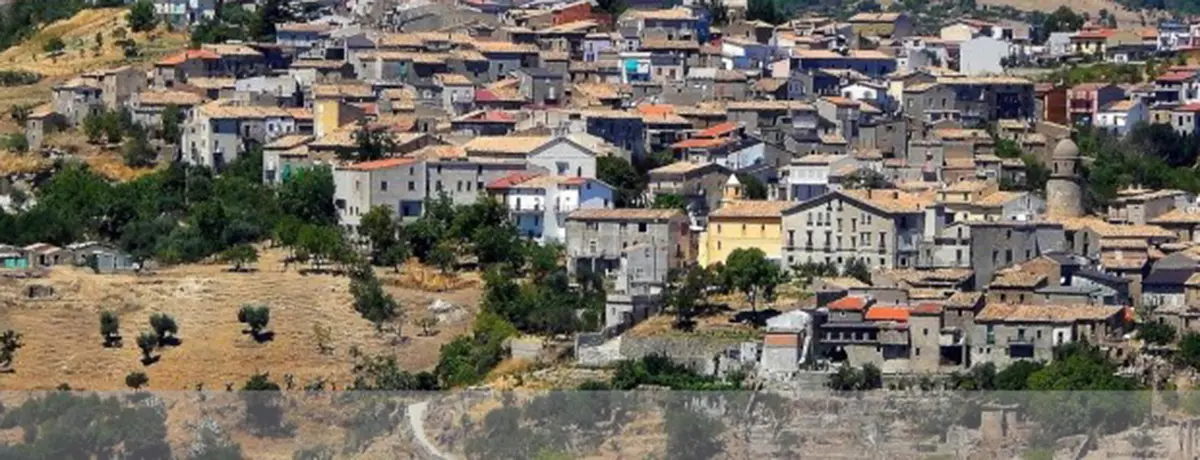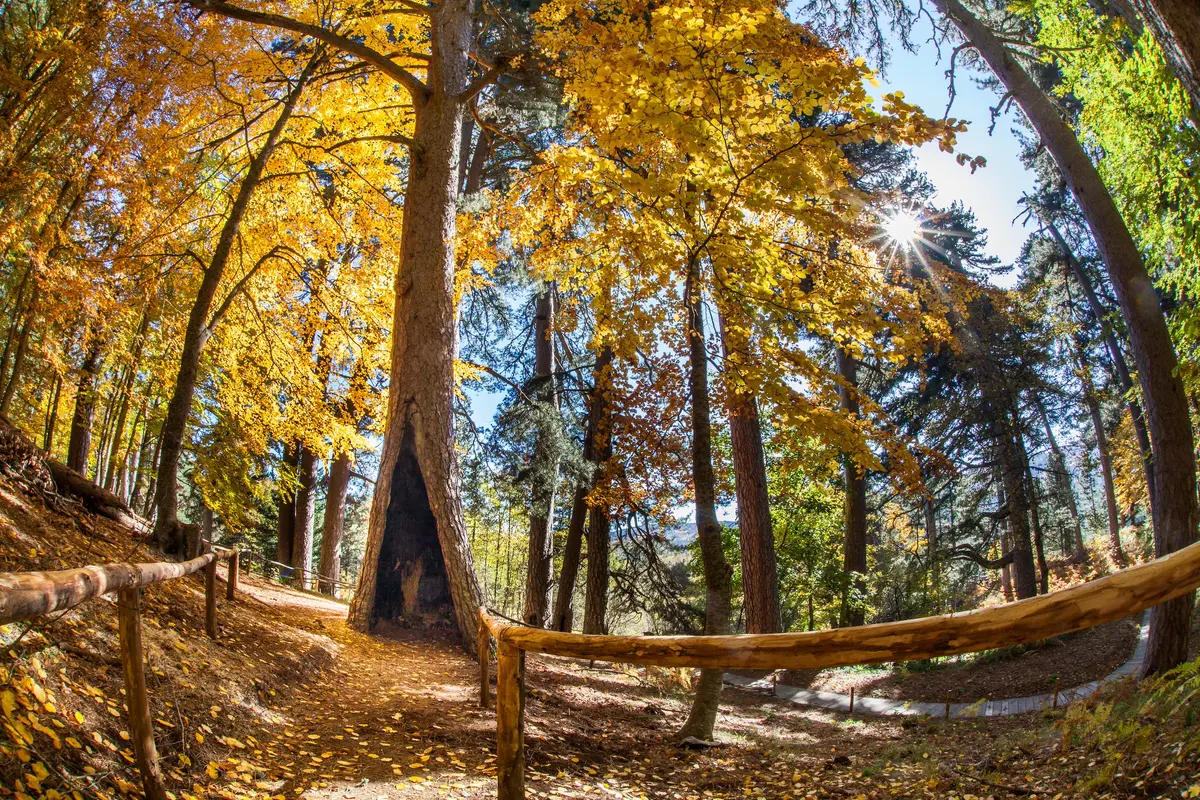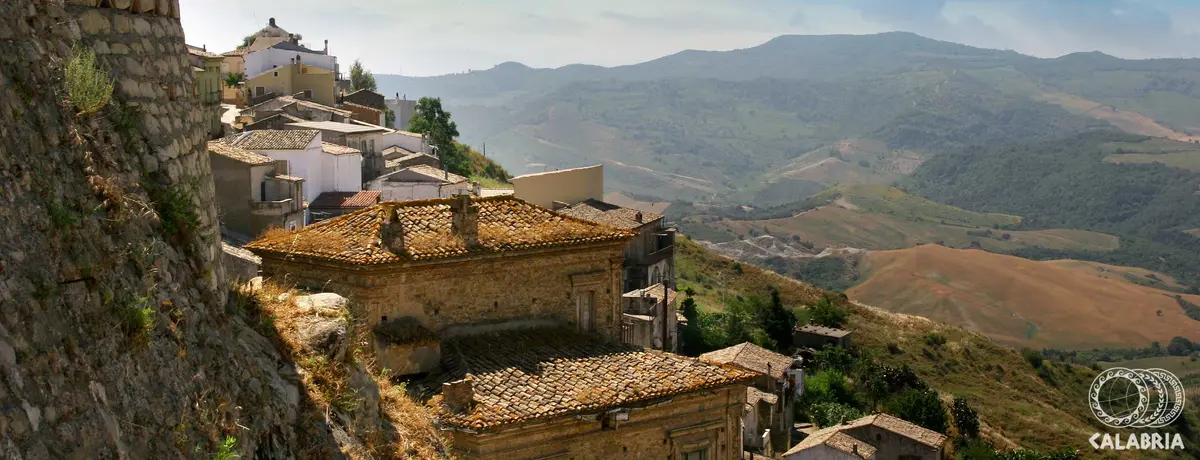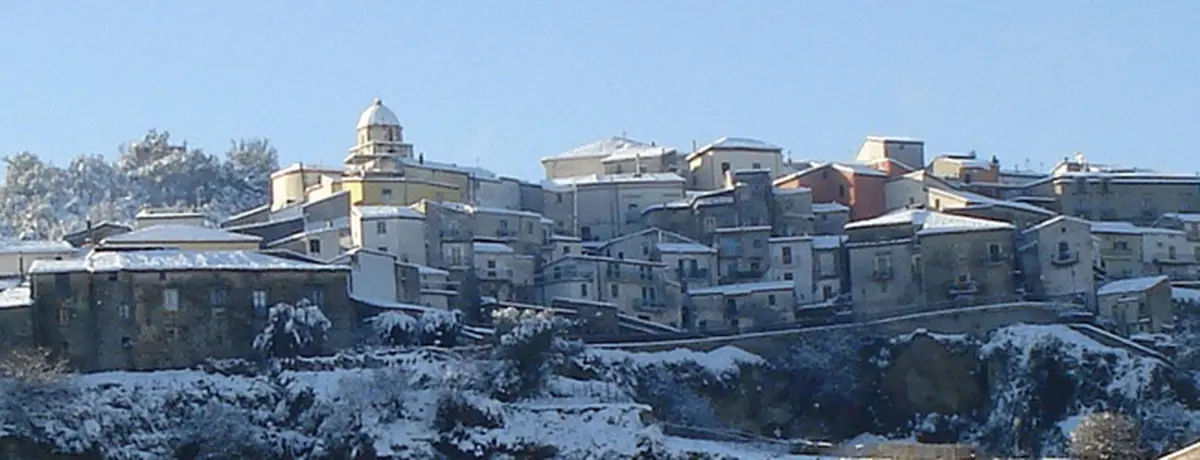Campana
Campana, the mystery of the Stone Giants

Town
Located in Presila Cosentina, Campana is a small village in the province of Cosenza with a centuries-long history due to traditions, legends and impressive buildings and churches distributed over an area that enjoys a typically Mediterranean climate, with mild summers and very cold winters.
In the past, the town was known as Kalasarna and many assumptions were made about the meaning of its ancient name. The Doric word chalà, “prominence” “spur” put before àrna may mean “rock of prominence” or “jutting rock”.
Many people have tried, unsuccessfully, to find an answer regarding the presence of the megaliths located within a short walking distance from the town of Campana.
This explanation is supported by the fact that the ancient hamlet called Terra had the shape of a spur, and it was inaccessible by two sides, while the accessible side was protected by a ravine that could be passed only through a drawbridge and a gate called Porta del Ponte (bridge gate). In the light of the raids and sieges that involved the area, it is possible that some lookout posts were created and that the Kalasarna was provided with a bell (“campana”) to give a general alarm.
The old town centre
In Campana, the timeless charm of its old town centre still persists, with its narrow streets and stone buildings of medieval origin. Many homes have been eroded by the passing of time and other dwellings built in remote times, have collapsed or become dangerous. This was the reason for launching a project some time ago to develop its town centre, making it easier to access by visitors wishing to stroll down its streets and squares overflowing with history and myths. Campana is conventionally divided into two parts, that old town nicknamed "Rione Terra" with its historical town centre, and the new part with buildings dating back to the 1940s. As a whole, Campana manages to combine the charm of its two souls, displaying intriguing dichotomies and architectural ensembles of great interest from a tourist point of view. In medieval times, a round tower, later called Torre dell’ Orologio (Clock Tower), was built around the village. It is the only of the five towers erected in the surrounding walls that is still standing. The tower had a good strategic location in terms of defence against external attacks that could rise beyond the "Nicà” river. In this respect, it is possible to still visit the famous “Porta dell’Eternità” (Gate of Eternity), built in remote times by the first settlements with the aim of defending the population from attacks by Barbarians. The monument, located near the old town, has been recently restored. There are many places of worship linked to very strong religious and Christian traditions such as: The Chiesa di San Domenico (Church of St Dominic, the town’s patron saint), located in Piazza Parlamento near the historical town centre; the Chiesa di Sant'Antonio (Church of St Anthony), founded in 1661 and consecrated in 1861 by Archbishop Francesco Marino; the Chiesa di Santa Maria Assunta (Church of St Mary of the Assumption), located in the heart of the historic town centre and built around the XV century; the Chiesa di Santa Maria di Costantinopoli (Church of Santa Maria of Constantinople), located at the town’s entrance and founded in 1569; the Church of Santa Maria di Costantinopoli, together with the “Confraternita Maria S.S. Di Costantinopoli” (Brotherhood of Holy Mary of Constantinople), which dates back between 1610 and 1629.
The Stone Giants
An extremely fascinating monument, which over the years has attracted the attention of many scholars and national TV, Campana’s Stone Giants are two huge sculptures made of local stone that can be found in the town of Incavallicata. The statues, rediscovered in the past few years, had already been known in the past as reported in a 17th century text where Bishop Francesco Marino, identifies one of the statues as "The grand colossus fallen to the ground due to earthquakes". Additionally, a map of Calabria from 1603, referred to Incavallicata as the "Hill of the Giants”. Little more than the base with an undefined shape remains of the “Gran Colosso”, while the statue of the “Elefante di Pietra” (Stone elephant) is well-defined. A great number of people have tried to find an answer regarding the creation of megaliths located within a short walking distance from Campana's town centre. In fact, there are many theories as to their origin, even if currently, there is no specific answer as to how they were made, and the dating and nature of the statues is still under study. One of the main theories states that the two statues were made during the period of arrival into Italy of Pirro, who was the first to bring elephants to Calabria. Another theory argues that the statues are of prehistoric carvings and that the statue of the elephant portrays an “elephas antiquus”; i.e. a pachyderm that lived toward the end of the Pleistocene also in southern Italy, based on evidence of archaeological discoveries made in the area of Pollino Park in the Municipality of Rotonda.
Gastronomy
Campana has very cold winters which are made a little more bearable when intense aromas and full-bodied flavours fill its streets. Like many other towns of Calabria, Campana has a great gastronomic tradition of home-cooked meals, such as the “maccarruni", thin sheets of home-made pasta made with the addition of cooked legumes traditionally in a "pignata" (a terracotta jug with a wide opening).
The cooking of beans (suraca) undergoes a long process in the fireplace with the pignata laid directly on the embers and distant from the flames. Cooking requires at least an entire day, following the saying “A mindi a matìna e ta màngi a sìra“ (start cooking in the morning and eat in the evening). At the end of it is mixed in a pot for home-made pasta.
Useful information
What to know about Campana
Travel Ideas
There are 2 travel ideas.
Infopoint Campana
Piazza Parlamento, Campana
No result









